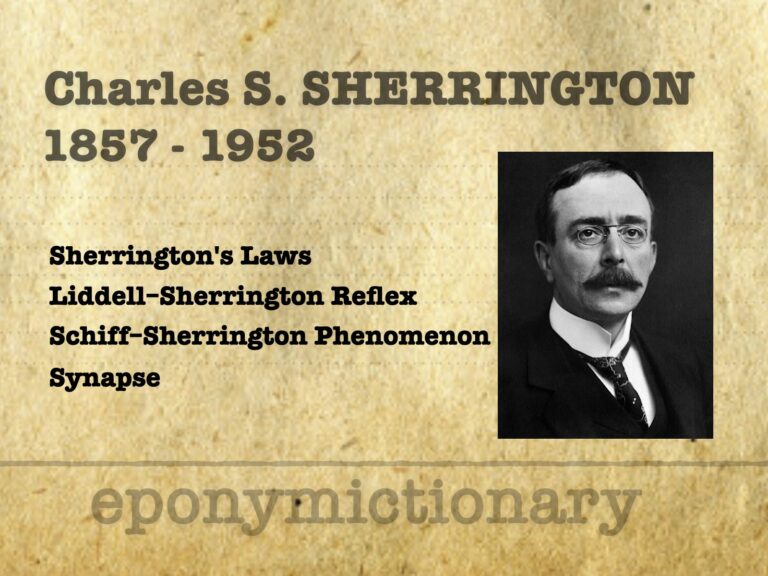
Charles Sherrington
Sir Charles Scott Sherrington (1857-1952) was an English neurophysiologist. Sherrington’s Laws (1897–1900); Liddell–Sherrington Reflex (1924) and defining the synapse

Sir Charles Scott Sherrington (1857-1952) was an English neurophysiologist. Sherrington’s Laws (1897–1900); Liddell–Sherrington Reflex (1924) and defining the synapse

André Frédéric Cournand (1895 – 1988) was a French physician and physiologist. Awarded the Nobel Prize for detailing heart catheterization
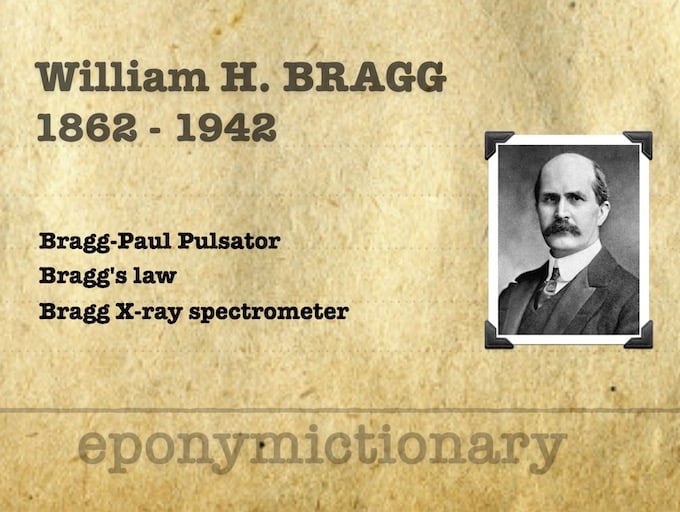
Sir William Henry Bragg (1862–1942) was an English physicist, mathematician, and chemist. Bragg's Law, Bragg Spectrometer and Bragg-Paul Pulsator
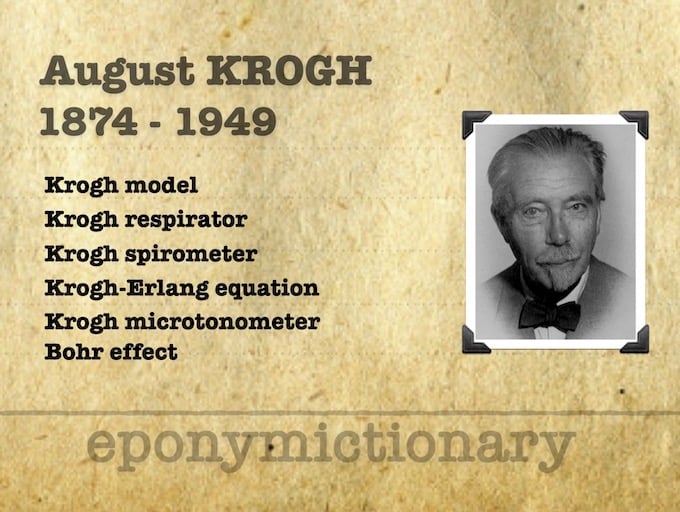
August Schack Steenberg Krogh (1874-1949) was a Danish physiologist and Nobel laureate who developed multiple apparatus that bear his name
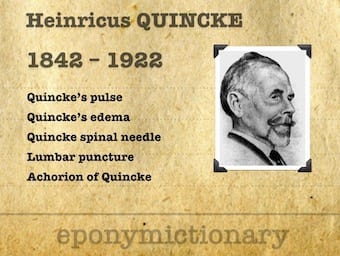
Heinrich Irenaeus Quincke (1842 - 1922) was a German physician. Quincke's name is eponymous with Quincke's pulse (1868), Quiuncke's oedema (1882), Quincke's achorion (1886), and Quincke's puncture (1891).

Willem Einthoven (1860 – 1927) was a Dutch physician and physiologist. Invented the first practical electrocardiogram (ECG) in 1903
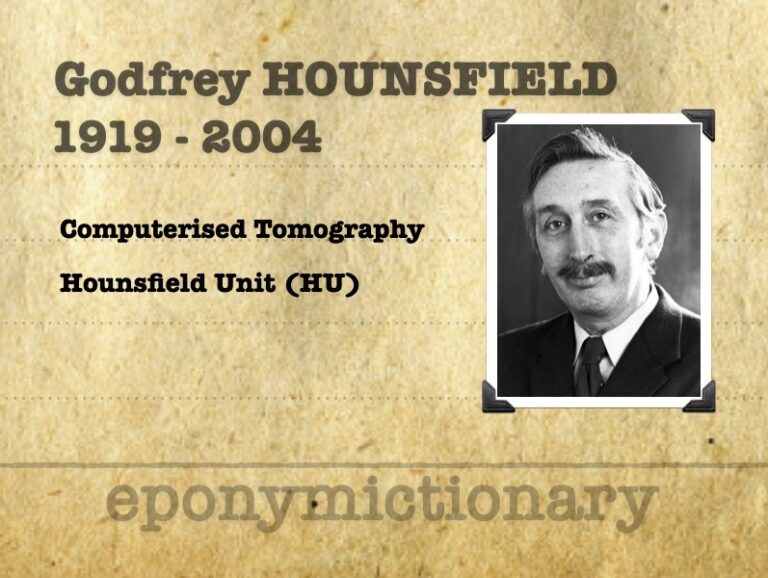
Sir Godfrey Newbold Hounsfield (1919-2004) was an English electrical engineer, Invention of computed tomography and Hounsfield Units (HU)

Róbert Bárány (1876 - 1936) was an Austro-Hungarian otologist. Nobel prize in for his "work on the physiology and pathology of the vestibular apparatus."

Wilhelm Conrad Röntgen (1845 – 1923) was a German physicist. 8 November 1895 produced electromagnetic radiation in a wavelength range known as X-rays (Röntgen rays).
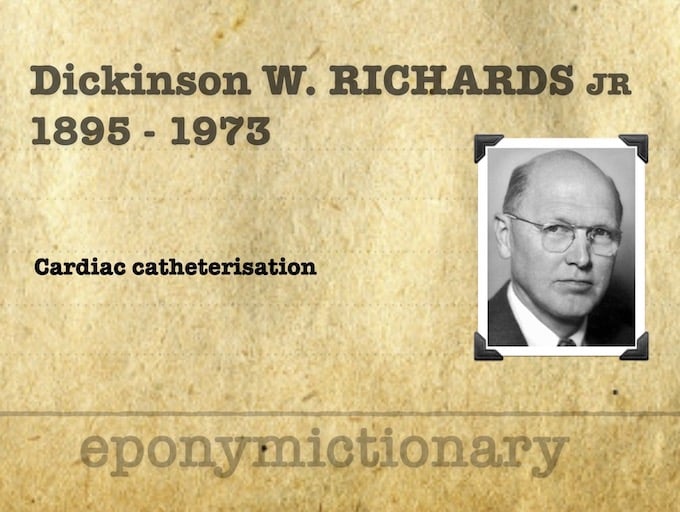
Dickinson Woodruff Richards, Jr. (1895 - 1973) Nobel Laureate and celebrated American Physician. Famously known for his work in development of cardiac catherisation and physiology with André Frédéric Cournand and Werner Theodore Otto Forßman.
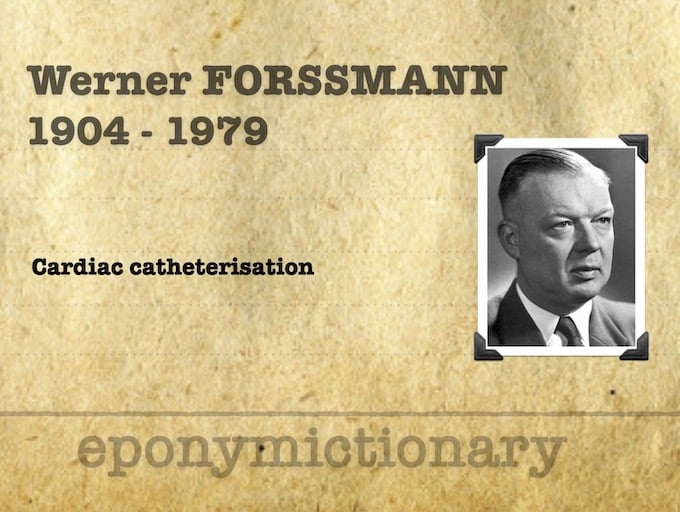
Werner Theodore Otto Forßman (1904 - 1979) was a German Doctor, Nobel Laureate and a pioneer of interventional cardiology.

Gerty Theresa (née Radnitz) Cori (1896 - 1957) was a Czech-born American biochemist. Cori cycle (1929), Cori ester (1936), Nobel prize (1947)